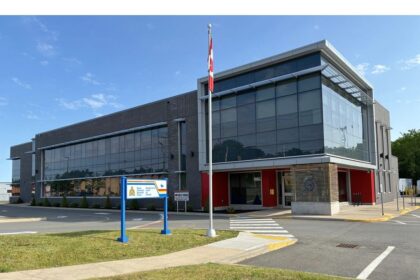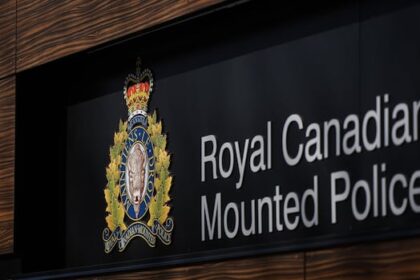British ColumbiaA spokesperson for the Vancouver Fraser Port Authority says plans to dredge Burrard Inlet remain uncosted, but that the work could start as soon as next year, following additional consultations, permitting and procurement. Authority also says work could begin as early as next year, following further consultation, permittingWolfgang Depner · The Canadian Press · Posted: Nov 10, 2025 11:35 AM EST | Last Updated: 3 hours agoListen to this articleEstimated 4 minutesThe audio version of this article is generated by text-to-speech, a technology based on artificial intelligence.Preliminary plans presented by the Vancouver Fraser Port Authority on its website call for the deepening of the navigation channel underneath Vancouver’s Second Narrows bridge, seen here in March 2024. (Justine Boulin/CBC)A spokesperson for the Vancouver Fraser Port Authority says plans to dredge Burrard Inlet remain in the preliminary stage with no costs currently attached to them. But the authority, which is leading the dredging, also says that the work could start as soon as next year, following additional consultations, permitting and procurement.Senior communication advisor Sarah Matak said the authority continues to collaborate with government, industry and communities including local First Nations to “move the proposed dredging forward,” but says that the final scope and cost of the project “are still being determined.” Prime Minister Mark Carney first floated the idea in the spring, but the most recent federal budget does not include any specific references to the project, beyond promises to “improve access” to overseas markets by investing in new airport, railway and port infrastructure.Matak said projects that enhance port capacity and efficiency fall under the mandate of the authority, which is “encouraged by the federal government’s focus on building trade-enabling infrastructure and advancing initiatives that support trade diversification.”Preliminary plans presented by the port authority on its website call for the deepening of the navigation channel underneath Vancouver’s Second Narrows bridge, so ships including Aframax-class tankers filling up at the Trans Mountain’s Westridge Marine Terminal could, in the words of the authority, “load more fully.”The port authority says the proposed dredging would benefit Canada by strengthening national supply chains, but marine experts have already said that the project requires careful scrutiny.Plans for possible dredging of the Burrard Inlet under the Second Narrows Bridge say up to 30,000 cubic-metres of material — or about 20 to 25 barges worth of material — could be removed. (Justine Boulin/CBC)Juan José Alava, adjunct professor in the School of Resource and Environmental Management at Simon Fraser University in Burnaby, B.C., acknowledged that the planned dredging envisions what he calls “appropriate mitigation measures.”But he added that the review process must consider several points. He said the marine-coastal environment of Burrard Inlet has changed, and it is not the same as it was during the last two or three decades because of coastal development and industrialization, urban sprawl, chemical pollution and climate change, among other activities.He added it is of “paramount importance” to identify and evaluate threatened and endangered species inhabiting Burrard Inlet and surrounding areas and how the dredging activities might impact their habitat.”Likewise, it is crucial to ensure that the potential pollution risks and disruption from dredging activities are critically assessed, and will not compromise the access and harvesting of traditional seafoods by First Nations communities with implications for food security and sovereignty,” he said. Other environmentalist voices, meanwhile, have already signaled their opposition to the proposal because it represents a doubling down on unsustainable mega-projects like the expanded Trans Mountain oil pipeline.Preliminary field studies have been underway since May and some early ideas about the project have recently come to the surface. The authority’s website detailing the proposal says the dredging footprint covers an area of less than two hectares, or roughly three standard-sized soccer fields. “We anticipate that the dredging will reach a maximum depth of approximately [six metre] below the seafloor in the deepest sections, with most of the dredging occurring at shallower depths, averaging around 1.3 metres below seafloor across the remaining dredge area,” it reads.The website adds that the proposed dredging work could remove up to 30,000 cubic-metres of material — or about 20 to 25 barges worth of material — with the work anticipated to be done only once, comparable to the dredging underneath the Lions Gate Bridge in the 1970s.A ship passes under the Lions Gate Bridge during a period of dense fog in West Vancouver on Nov. 29, 2023. (Ben Nelms/CBC)The authority says the proposed dredging would not change the size of the largest vessel capable of sailing underneath the Second Narrows bridge. “The largest size will remain the Aframax-size vessel,” it reads. “The work aims to facilitate the potential for cargo ships transiting through the Second Narrows waterway to load more fully — including vessels calling at Trans Mountain’s Westridge Marine Terminal.”That facility marks the end of the expanded 1,180-kilometre-long Trans Mountain pipeline that begins near Edmonton, and there are already calls to expand it. B.C. Energy Minister Adrian Dix has publicly supported the dredging, dating to the spring of 2025.
PlanstodredgeBurrardInletremainuncosted, says VancouverFraserPortAuthority












